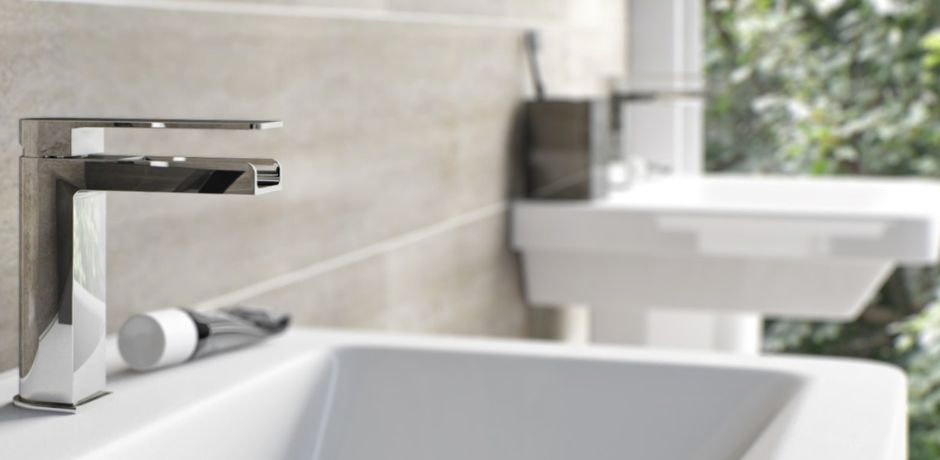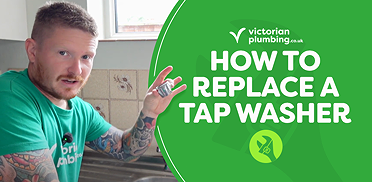OUR BOXING DAY SALE ENDS SOON!
Free delivery on orders over £499*
Understanding Home Water Systems
Understanding Home Water Systems
Whilst we all use our bathrooms every single day, many of us don't really understand how they actually work. In this article, we'll be looking at home water systems and how they function.

If you are undertaking a bathroom project, it'll certainly do you no harm to familiarise yourself with home water systems. Most systems are incredibly efficient, rarely cause issues and aren't as complex as you might think.
Basically, there are 2 main types of household water system:
- Supply systems
- Drainage systems
For each of these systems, there are 2 common forms:
Supply systems
- Indirect
- Direct
Drainage systems
- Single stack
- Two pipe
Supply systems
Indirect water system
The most common type of water system in the UK, the indirect system sends fresh water into your property through to the household stopcock valve (main on/off tap)—usually located underneath the kitchen sink. Once the water has reached this area, you can get drinking water from the kitchen sink, but the rest of the water is moved to a storage cistern which supplies the water for the rest of the house. This means it doesn’t supply drinking water to all taps in the house.
The indirect system has a degree of flexibility. If the mains are turned off, or pressure is low for example, there is a stored supply of water to run off until mains flow is returned. In addition, indirect systems are also quieter than their direct counterparts. These advantages don’t necessarily outweigh the significant disadvantages associated with the system. They’re much more expensive to install, suffer from the risk of contamination of stored water and can become complex and problematic when faced with higher demand.

Direct water system
This is the system that more modern houses are usually equipped with. The direct system sends mains pressured drinking standard water to every cold tap in the house, including the bath, bathroom basin and kitchen sink. Depending on the hot water system, the cold feed will either enter the hot water cylinder or the combination boiler.
In contrast to the indirect system, the direct system is cheaper to install, reduces the chance of a bacterial contamination and is more suited to high demand. Obviously, another advantage is the fact it provides safe drinking water to all cold taps in the house. Although it does have its flaws in contrast to the indirect system. It’s noisier and can’t supply water when mains pressure is low or supply is off.
Drainage systems
As well as supply systems to get water in, you also need a drainage system to get rid of waste water from your property. Again, there are 2 main types of system:
Single stack system
The single stack system is one large pipe in which all of the wastes in the house are connected to. All feeding downwards towards the sewer, these systems have a vent which extends above roof level, allowing gases to escape, and are much more common in modern properties.
Two pipe system
This system has different pipes for toilet waste to the other wastes. Usually found in older properties (pre 1960s), it sends toilet waste directly into the manhole inspection chamber, before leading into the sewer.

Water system jargon buster
- Cold feed: This is the pipe that sends (or feeds) cold mains water through to the hot water system
- Float valve: Otherwise known as a “float operated valve” or “ball valve”- this is a floating device on top of the tank connected to a lever that closes when the tank gets full
- Overflow: This is also referred to as the “warning pipe”, a system that prevents the tank in indirect systems from overflowing
- Stop cock: This can also be known as the “stop valve” or “stop tap”. It’s the main on/off tap for water in your property
- Storage cistern: This is where in an indirect system cold water is stored and in a direct system where water is stored before it goes into the hot water system
How do I test for leaks?
Ever wondered why your water bills are so high? You should check if you’ve got a leak. A great way to do this (so long as you have a meter) is taking a meter reading and then uncoupling any water consuming appliance from the mains and turning all taps off. Wait for as long as you can (overnight is always a safe bet) and then check the meter reading again the next day. If there has been a change in the meter reading then you know you have a leak. If it’s not immediately obvious call a professional tradesperson.
Where does it become my responsibility?
Where your water supply and drainage becomes your responsibility is the boundary of your property. There will be a supply line, traditionally a lead pipe, bringing water in, and a drainage/waste pipe taking away all the foul waste from your property.
With waste systems it’s a bit more complicated. Although a general rule of thumb is that any drains on your property leading to the main sewer are your responsibility, for properties built prior to 1937 the local authority is responsible. However, even if the local authority have to organise the work, you can still be liable for charge.

Want to identify your water heating system?
Head over to our latest blog post "Do I need a shower pump?" to find out which water heating system you have.

Sarah
Sarah is one of our resident bathroom experts here at Victorian Plumbing. She loves writing helpful bathroom design and DIY articles, as well as detailed buying guides.


